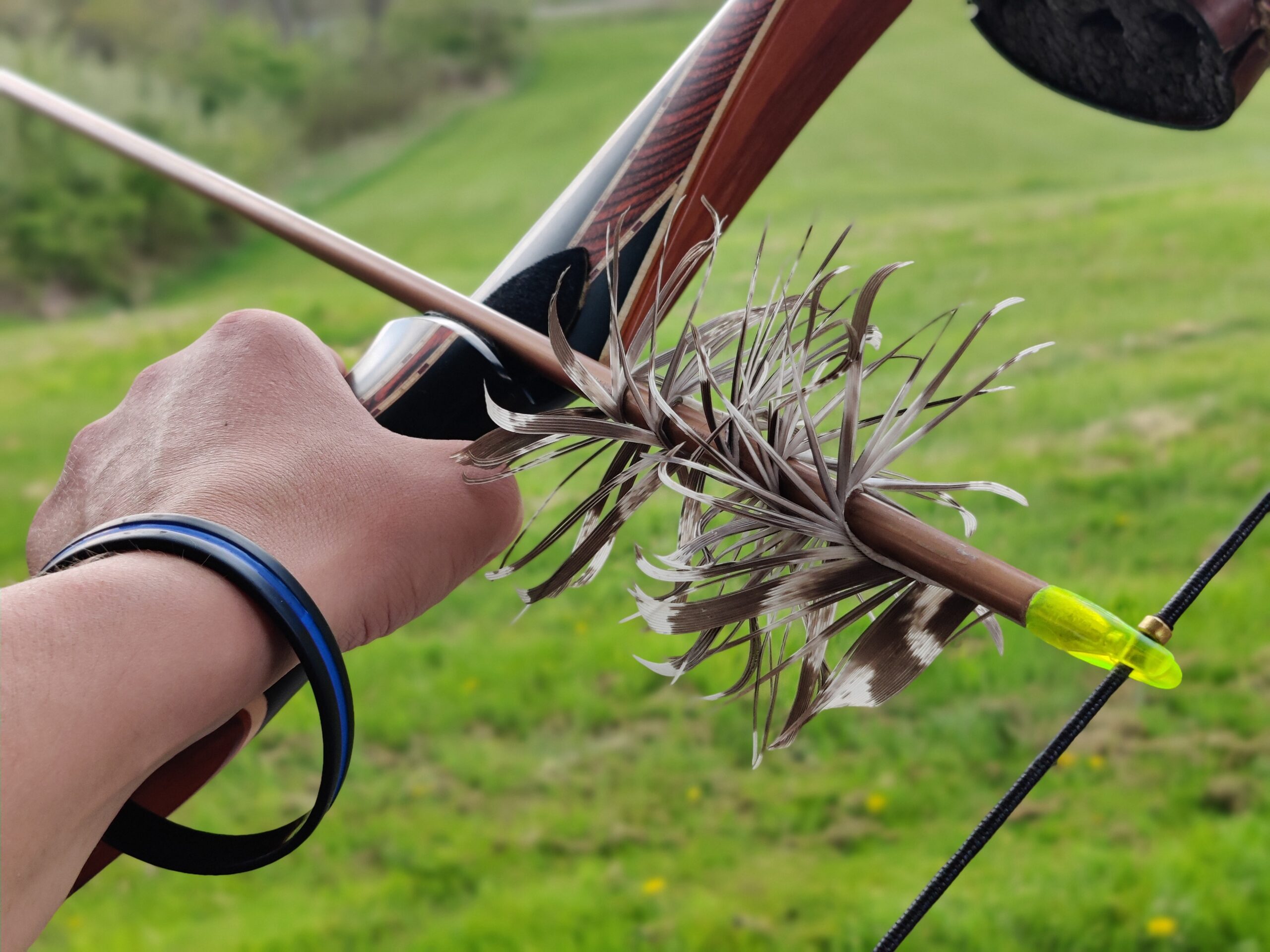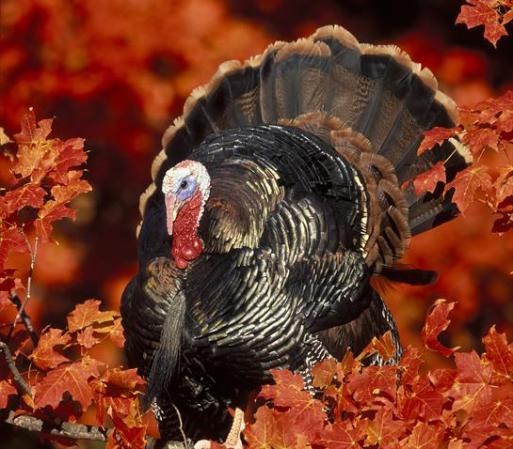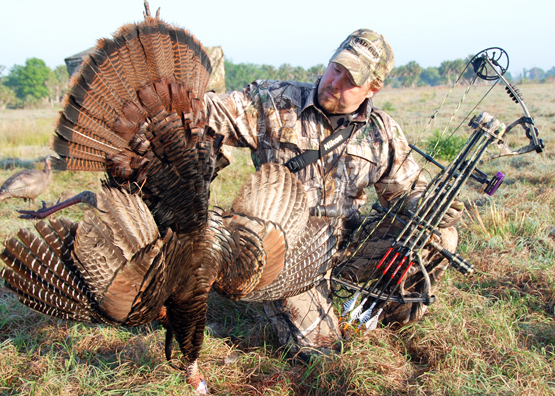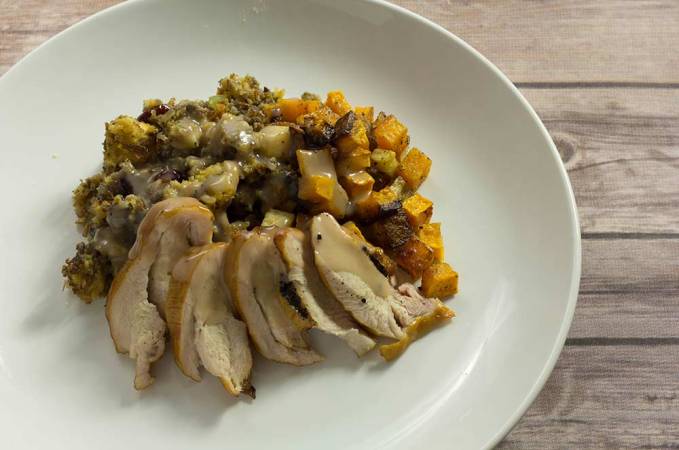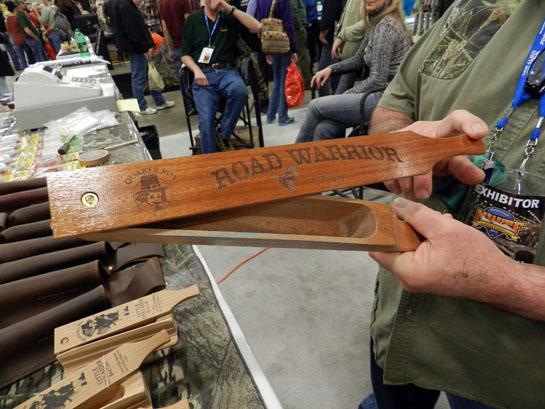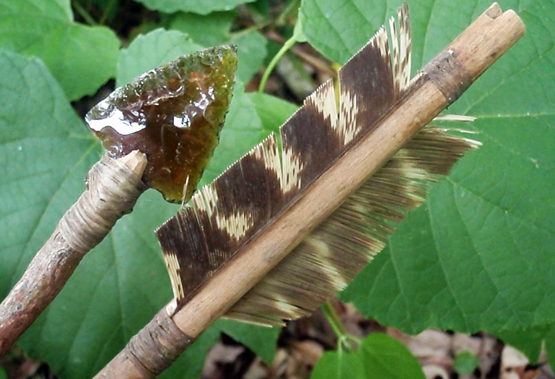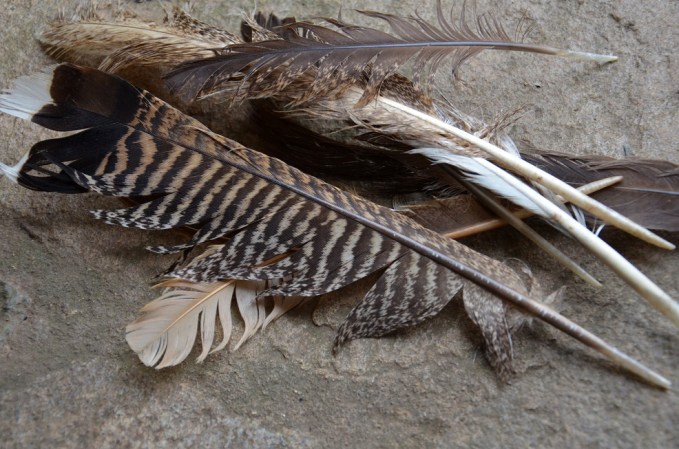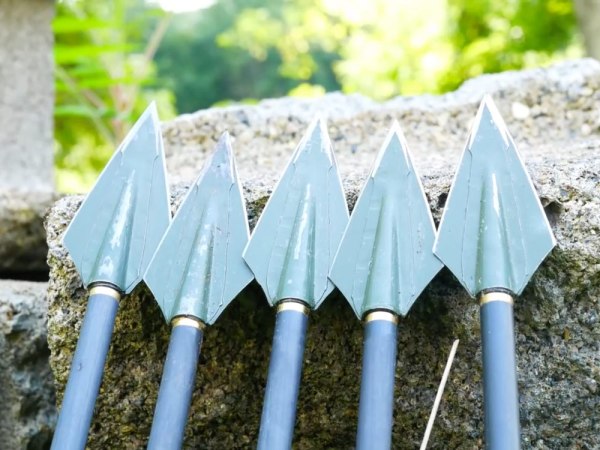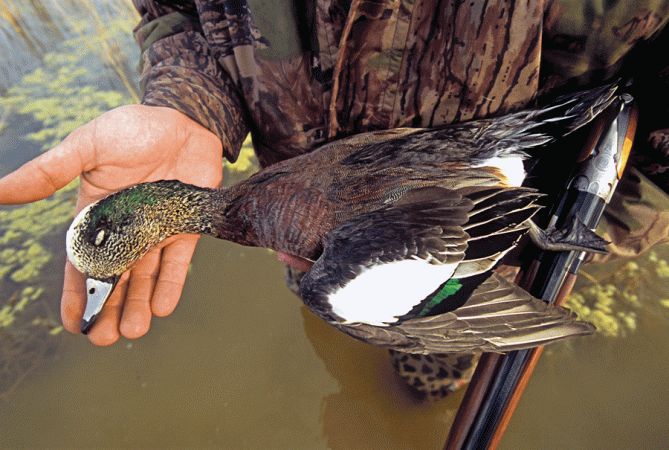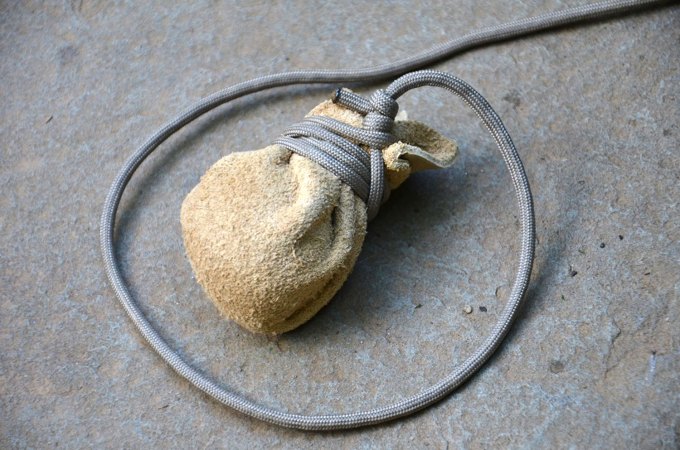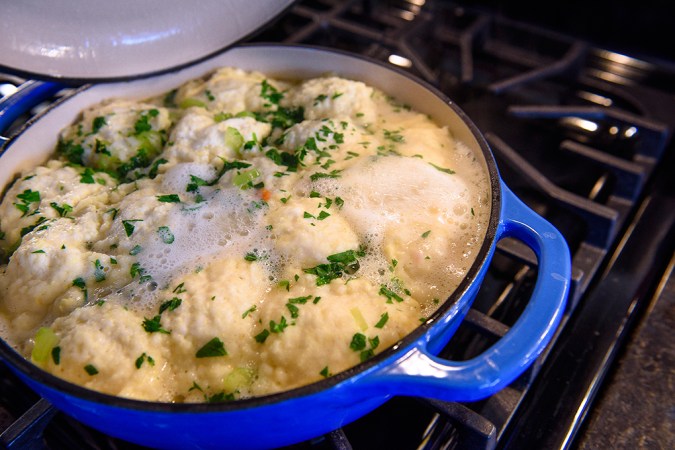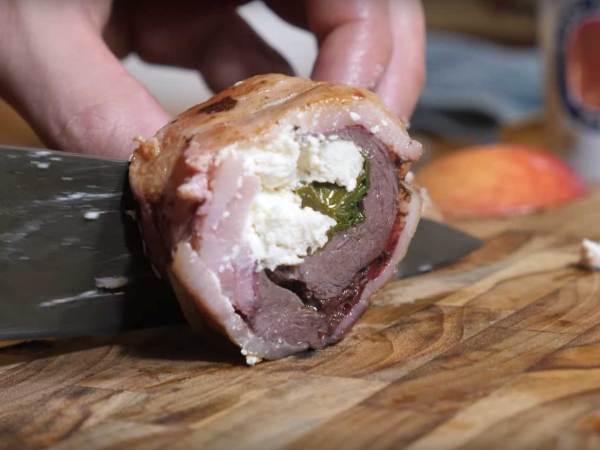We may earn revenue from the products available on this page and participate in affiliate programs. Learn More ›
One of the most beautiful and useful parts of a wild turkey are its wing feathers. Oftentimes, hunters discard the wings, but there are actually many uses for the feathers. I keep them mainly for artwork and decoration. But one of my favorite things to make are spiral-wrap turkey wing flu-flu arrows.
If you are unaware, flu-flu arrows are arrows specifically designed for large feather fletchings that create drag when the arrow is released. This causes the arrows to only travel a short distance and it can usually be found sticking straight into the ground with the fletching waving in the air above the grass. Flu-flu arrows are a great way to shoot at aerial targets, and are perfect for hunting rabbits and birds.
While flu-flu arrows are expensive to buy pre-fletched, they’re extremely easy and cheap to make yourself. Unlike regular fletchings, you won’t need a template to cut them perfectly, or a feather burner or sander.
Here is a list of what you will need to make your own flu-flu arrows:
- Arrow shafts
- Turkey wing feathers
- Super glue
- Tape measure
- Sharp shears/scissors/utility knife
- Marker
- Clothespins or bread clips (optional)
Start with a Clean Arrow Shaft
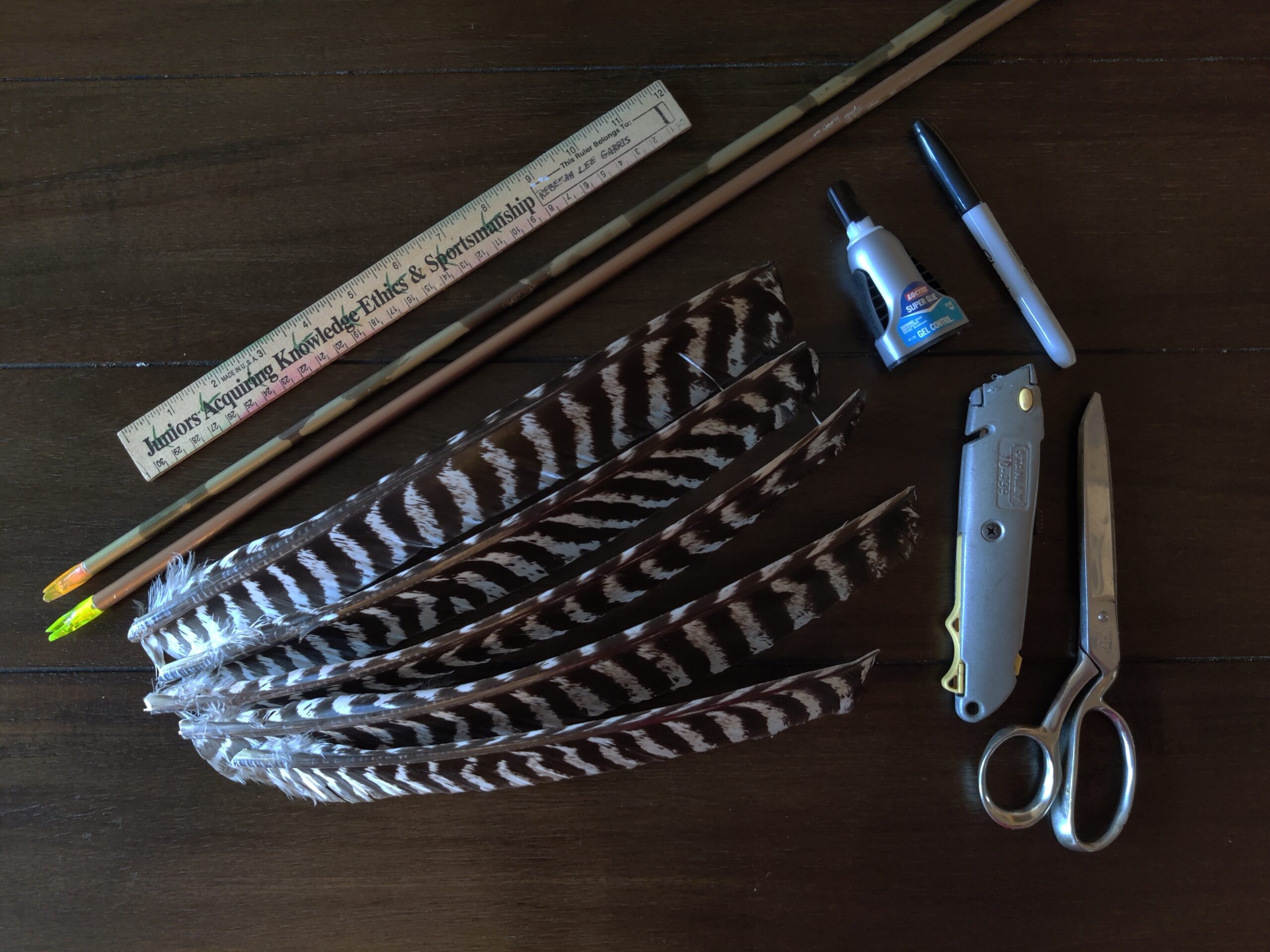
First, you’ll want to make sure your arrow shafts are clean. If they were previously fletched, make sure there is nothing remaining. Use the utility knife to scrape off any remaining glue or fletchings if needed. You can also wipe it down with some rubbing alcohol for good measure, but it’s not necessary.
Next, you’ll want to split your wing feathers. You’ll notice that one side of the feather is far thicker than the other. Use the side of the quill that has more feather. With your shears, carefully split the quill up the middle from one end to the other. Discard the smaller side, and trim the remaining quill on the larger side.
The inside of the quill looks like white styrofoam. Cut as much of this off as possible. Your turkey feather will need to flex easily to wrap around the arrow, so trimming off any stiff pieces is essential.
Read Next: How to Shoot a Traditional Bow: The Basics of Trad Archery
Mounting Your Feather Fletching
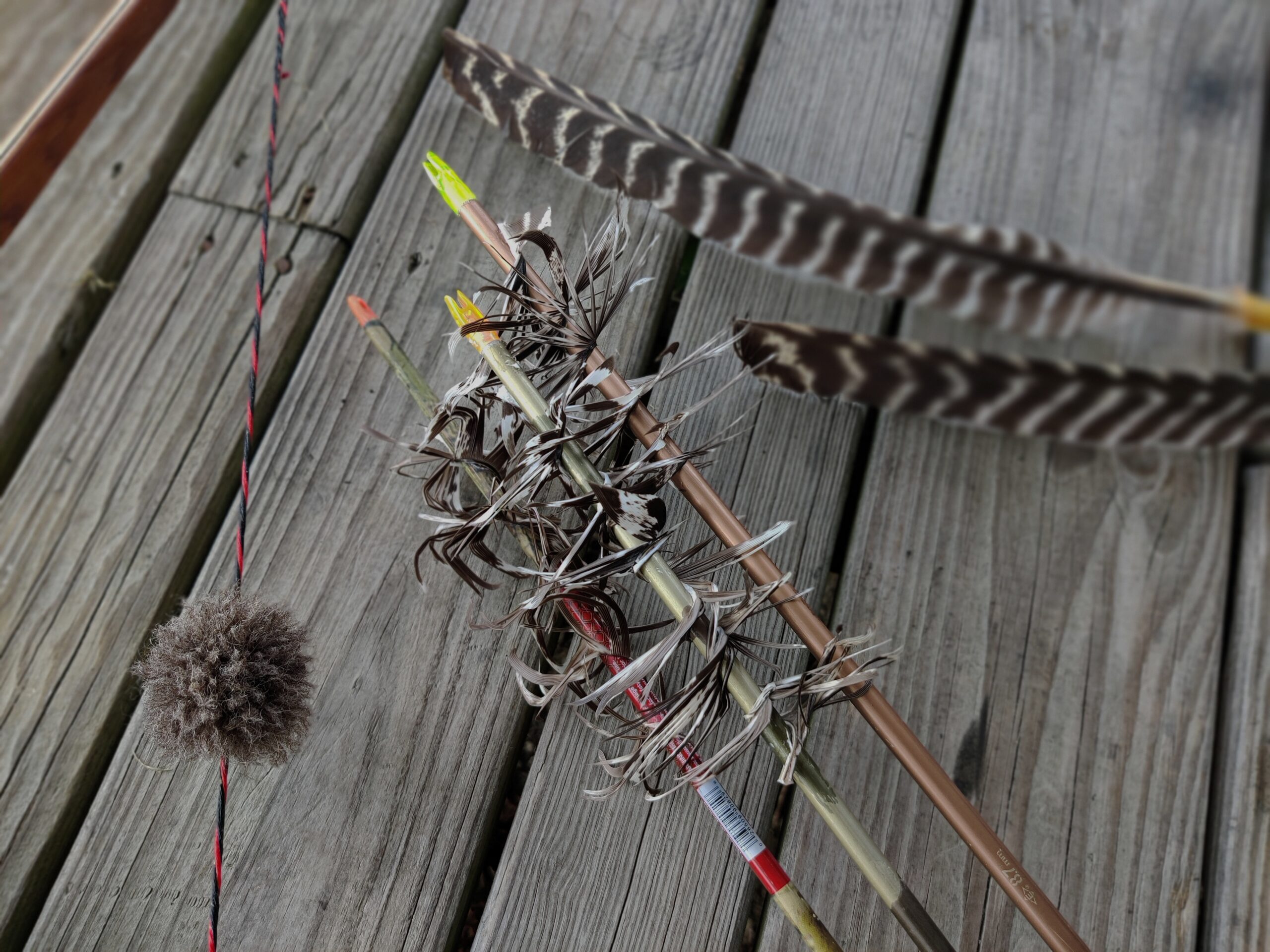
Once your quill is trimmed, cut the thicker end of it across so it’s flat and square. Add a drop of glue to the underside and apply it to your arrow shaft, about a quarter to half inch from the nock. The distance from the nock isn’t particularly important, I just like to use this as a measurement.
Use a clothespin to hold the feather in place on the arrow until the glue dries.
Next, run a line of glue from one tip of the quill to the other. Gripping the feather firmly in your hand, spin the arrow clockwise (or counter clockwise depending on the natural curve of the feather) so that the glue side of the quill is wrapped around the shaft. If you don’t want to get glue all over your hands, you can wear rubber gloves.
This will have to be done quickly as you don’t want the glue to dry before you’re done wrapping. Once you get to the end of the feather, clip it with the clothespin to allow it to dry. Add an extra drop of glue at the very end of the feather for more support. Once the glue is dry, your arrow is complete.
How tightly you wrap the feather is up to you. I like to measure the brace height of my bow to make sure I allow enough room for the arrow to fit on the bow without the feathers getting in the way of the bow rest. The tighter you wrap it, the more drag the arrow will have. You can also choose to fletch with a second feather if needed, depending on your bow setup and draw weight.

